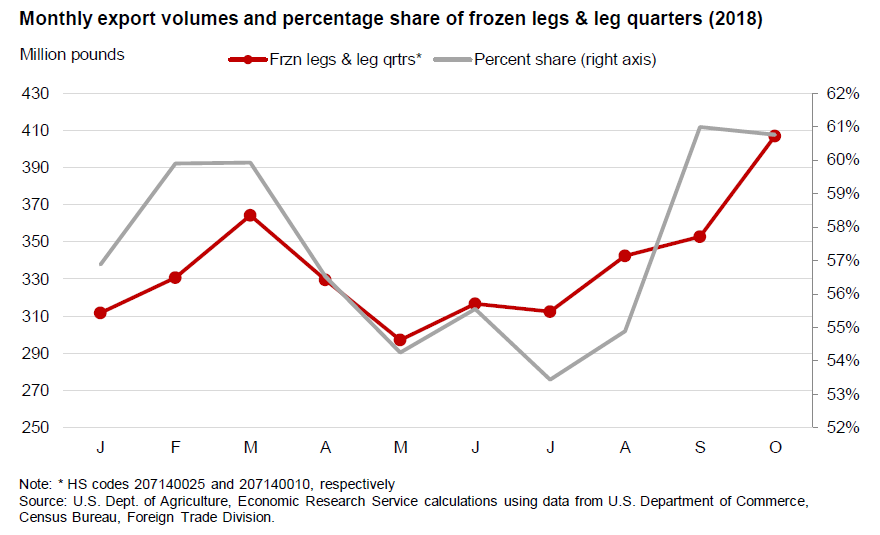Broiler production projections were revised up for fourth quarter on current production data, but were reduced for the first half of 2019 on expected year-over-year decreases in slaughter. Fourth-quarter exports were increased significantly on 5-year-high October shipments.
October broiler production totaled nearly 3.9 billion pounds, a 0.4 percent increase over the same period last year after adjusting for slaughter days. This growth was composed of a 0.1 percent decrease in the number of chickens slaughtered and a 0.5 percent increase in average weights. October was the first month since January 2018 in which the average rate of daily slaughter fell below 2017 levels. However, production data thus far in the quarter pointed toward higher quarterly production than expected last month, and the fourth-quarter production forecast was revised upward by 10 million pounds to 10.7 billion pounds. View USDA’s full Livestock, Dairy, and Poultry Outlook report here.
After increasing rates of year-over-year growth of weekly chick placements during much of the first half of 2018, growth began slowing in August and turned negative in September (see chart below). Continued year-over-year decreases of eggs set and chick placements in October and November suggest that the trend of decreased slaughter is likely to continue into early 2019. Meanwhile, year-over-year growth of average live weights appears to be slowing as processors scale back large-bird slaughter. First-half 2019 forecasts were decreased by 120 million pounds to 21.3 billion pounds based on negative projected growth in birds slaughtered.

Broiler exports reached nearly 670 million pounds in October, the highest volume exported since October 2013. The surge in shipments was driven by strong exports across all product categories. In particular, increasing shipments of frozen legs and leg quarters2 contributed significantly, reaching nearly 407 million pounds in October (see chart below). On average, these cuts represent 57 percent of export volumes; in September and October, this percentage share climbed to over 60 percent.


